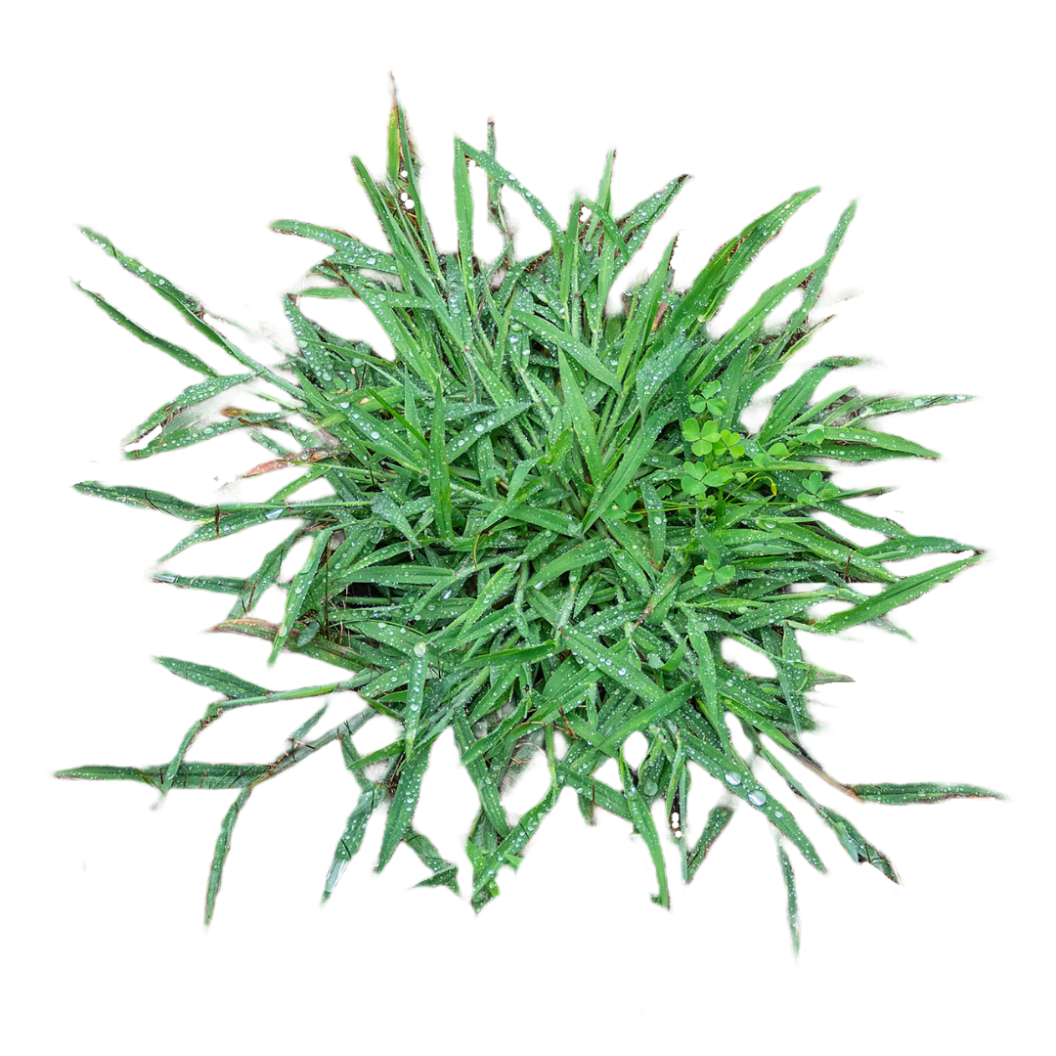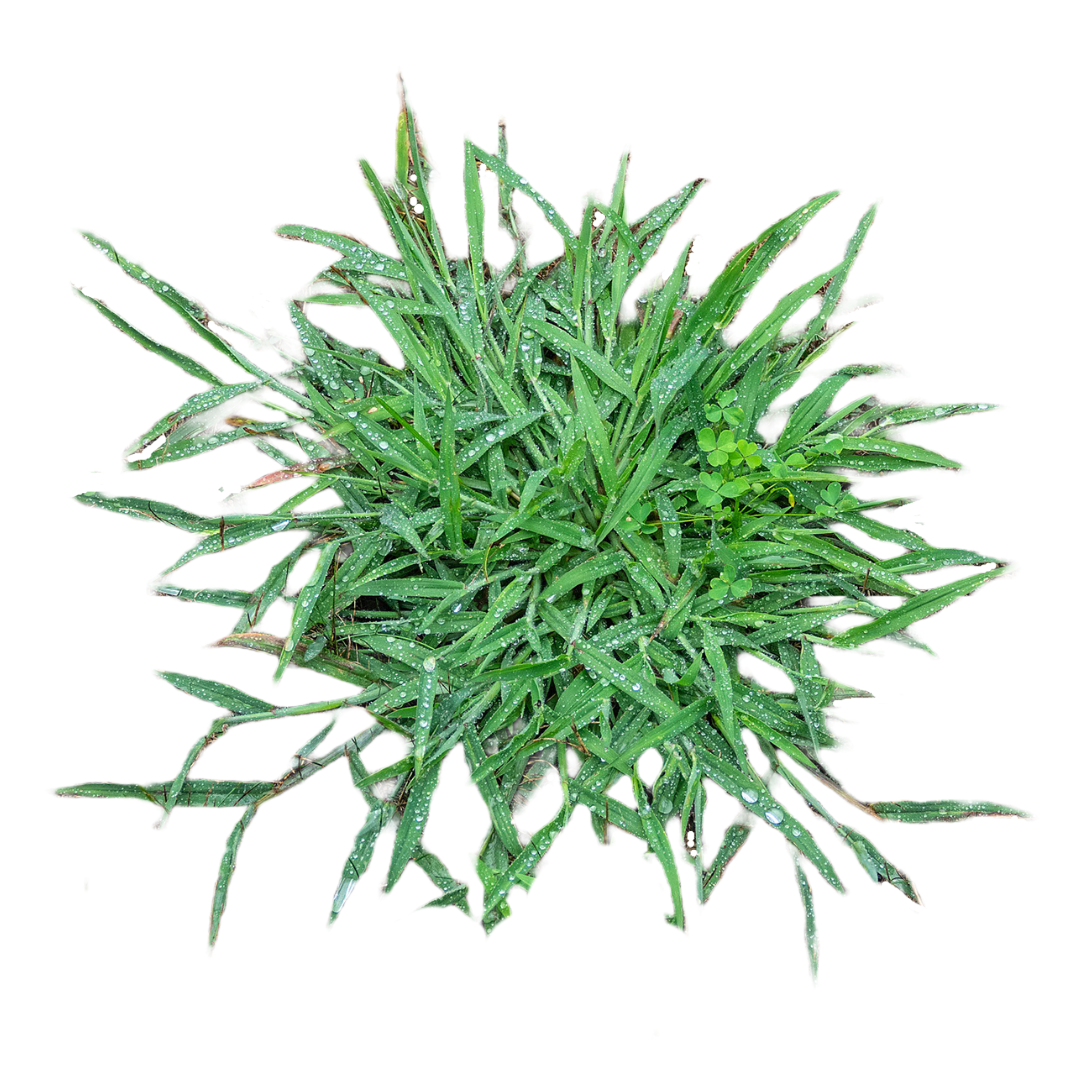
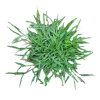

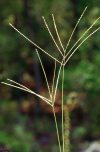

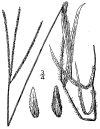
Crabgrass
DESCRIPTION: Crabgrass is one of the most common grassy weeds that can me tough to control due to its inherent resiliance and ability to withstand harsh weather conditions. Crabgrass also has the ability to quickly recover from damage adding to the frustration of those who would like it gone from their lawn or garden. It is commonly found in lawns, gardens, or virtually any grassy area. It has long, thin, pointed leaves that can grow up to several inches in length.
SCIENTIFIC NAME: Digitaria Haller
OTHER NAMES: Large Crabgrass, Hairy Crabgrass, Southern Crabgrass, Smooth Crabgrass
LEAF TYPE: Grass
FLOWERS: Flowers are very small and inconspicuous, with a greenish color. They are arranged in clusters on slenter stalks that rise above the leaves of the plant. The clusters themselves resemble small spikes or fingers, and each flower has two tiny, delicate petals that are somewhat difficult to see. They bloom in the late summer and early fall and are typicaly not considered to be particularly showy or attractive.
LEAVES: The leaves, like any other grass, are long, narrow, and pointed, with a bright green color. They grow in a clump from the base of the plant and spread outward in a circular pattern. They have a very smooth texture and are hairless , growing up to several inches in length. When viewed up close the leaves will present with a slightly glossy sheen.
LIFE CYCLE: Annual
HOW TO IDENTIFY: Crabgrass is incredibly common and most people are able to easily identify it once they've seen it and correctly identified it once. Look for a clump of grass growing in a cirrcular pattern with leaves that have a glossy sheen when viewed up close. The circular growth pattern allows it to smother out neighboring plants which also contributes to easily spotting it.
MECHANICAL CONTROL RECOMMENDATIONS:
1. Hand pulling - More Info
2. Use a Garden Fork or Weeding Tool - More Info
3. Mowing - More Info
4. Dethatching - More Info
5. Aerating the Soil - More Info
6. Overseeding - More Info
7. Mulching - More Info
8. Preventative Measures - More Info
CHEMISTRY RECOMMENDATIONS:
"Pre-emergent herbicides:
Prodiamine: This is a widely used pre-emergent herbicide that provides effective control against crabgrass and other annual grassy weeds. It's often sold under various brand names. Prodiamine is typically applied in early spring before crabgrass seeds germinate.
Dithiopyr: Also known by brand names like Dimension, dithiopyr is another pre-emergent herbicide that offers control against crabgrass and other weeds. It has the added benefit of providing some post-emergent control as well. Dithiopyr is typically applied in early spring before crabgrass germination.
Pendimethalin: This pre-emergent herbicide, commonly sold as brands like PreTurf or Pendulum, provides effective control against crabgrass and other grassy weeds. It should be applied before crabgrass seeds begin to germinate in early spring.
Isoxaben: While primarily used for broadleaf weed control, isoxaben can also provide some pre-emergent control of crabgrass. It's often found in combination products that target a range of weed species.
Oxadiazon: This pre-emergent herbicide, known by brand names like Ronstar, offers control of crabgrass and other weeds. It's often used in ornamental beds and landscapes.
Post-emergent herbicides:
Quinclorac: This is a popular post-emergent herbicide that is effective against crabgrass and other broadleaf and grassy weeds. It can be used on a variety of turfgrass species. Quinclorac is often found in products labeled for crabgrass control.
Fenoxaprop-P-ethyl: This herbicide targets grassy weeds and is effective against crabgrass. It's often used in combination with other herbicides to broaden the spectrum of control.
Mesotrione: Mesotrione, found in products like Tenacity, is effective against both broadleaf and grassy weeds, including crabgrass. It's also known for being safe on some cool-season grasses.
Sethoxydim: This herbicide is primarily used to control grassy weeds, making it effective against crabgrass. It's often used in turf situations where you want to selectively target grassy weeds while preserving broadleaf plants.
MSMA (Monosodium methyl arsenate): MSMA is effective against a range of grassy weeds, including crabgrass. However, it's important to note that its use is restricted in some areas due to environmental concerns associated with arsenic.
Glyphosate: Glyphosate is a non-selective herbicide that can control a wide range of weeds, including crabgrass. However, it will also harm desirable grasses and plants, so it should be used with caution in spot treatment situations.
Selective herbicides:
Fenoxaprop-P-ethyl: This herbicide is effective against crabgrass and other grassy weeds. It is often used on warm-season grasses like Bermuda grass and zoysia grass. It's important to follow label instructions for application rates and timing.
Quinclorac: Quinclorac is a broad-spectrum herbicide effective against both crabgrass and other broadleaf weeds. It can be used on various grass types, including cool-season and warm-season grasses.
Sethoxydim: Sethoxydim targets grassy weeds, making it suitable for controlling crabgrass. It is often used on warm-season grasses like Bermuda grass.
Mesotrione: Mesotrione, found in products like Tenacity, is effective against crabgrass and other weeds. It's safe to use on some cool-season grasses and can provide both pre-emergent and post-emergent control.
Quintozene: This herbicide, found in products like TZone SE, is effective against crabgrass and other broadleaf weeds. It's often used on cool-season grasses and can provide a combination of selective control.
Topramezone: Topramezone, found in products like Pylex, can provide post-emergent control of crabgrass and other grassy weeds. It's suitable for use on cool-season grasses and is known for its activity against a wide range of weeds.
Non-Selective herbicides:
Glyphosate: Glyphosate is one of the most widely used non-selective herbicides. It's effective at controlling many types of weeds, including crabgrass. However, it will also harm desirable plants, so it should be used carefully and selectively, primarily for spot treatments.
Glufosinate: Glufosinate is another non-selective herbicide that can be effective against crabgrass and other weeds. Like glyphosate, it should be used with caution to avoid damage to desirable plants.
Paraquat: Paraquat is a fast-acting non-selective herbicide. It's highly toxic to plants upon contact, and it's often used for spot treatments in areas with stubborn weeds. It's important to note that paraquat has strict regulations and safety requirements due to its toxicity, so its use should be approached carefully.
Diquat: Diquat is a non-selective contact herbicide that can be used to control crabgrass and other weeds. It works quickly but requires direct contact with the plant's foliage for effective control.
Sodium Chlorate: Sodium chlorate is a non-selective herbicide that is used to control a variety of weeds, including crabgrass. It's a soil-applied herbicide and can be used in areas where vegetation needs to be completely cleared, such as before replanting.
Recommended Prevention
Recommended Control

